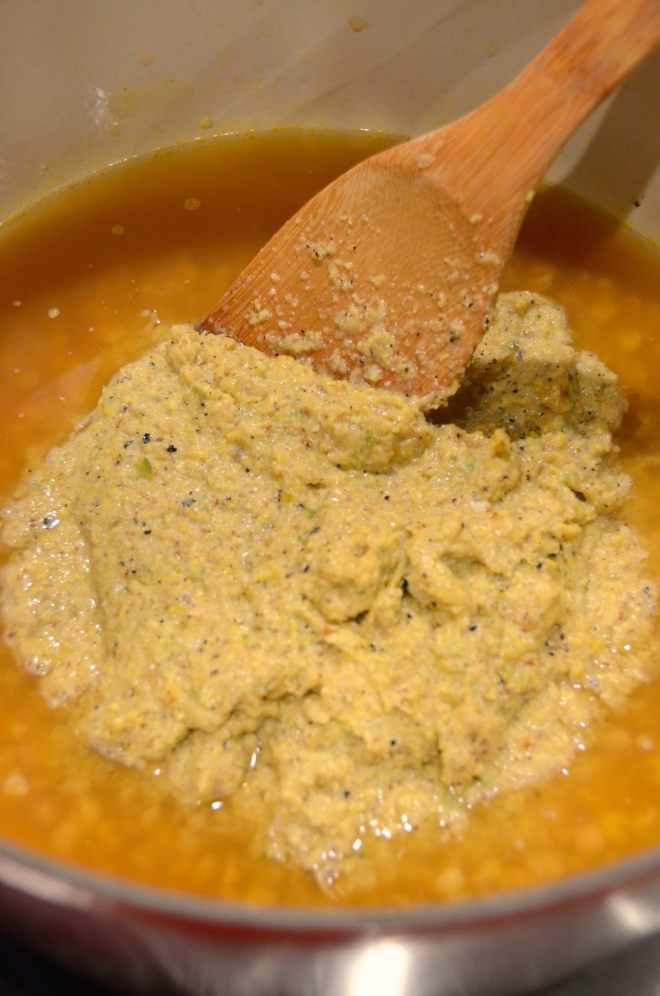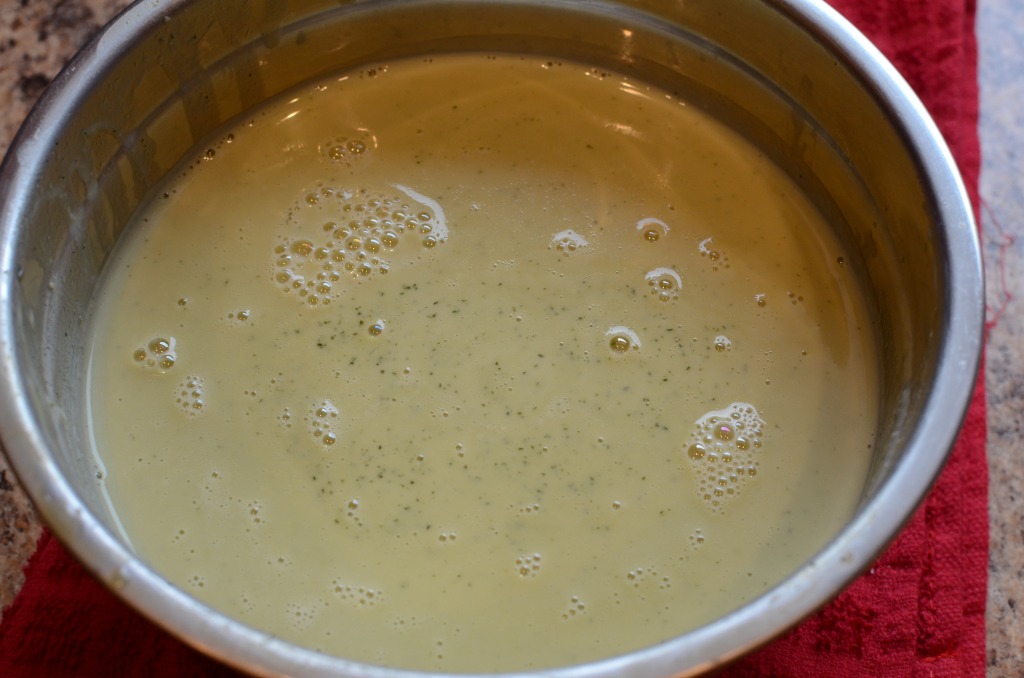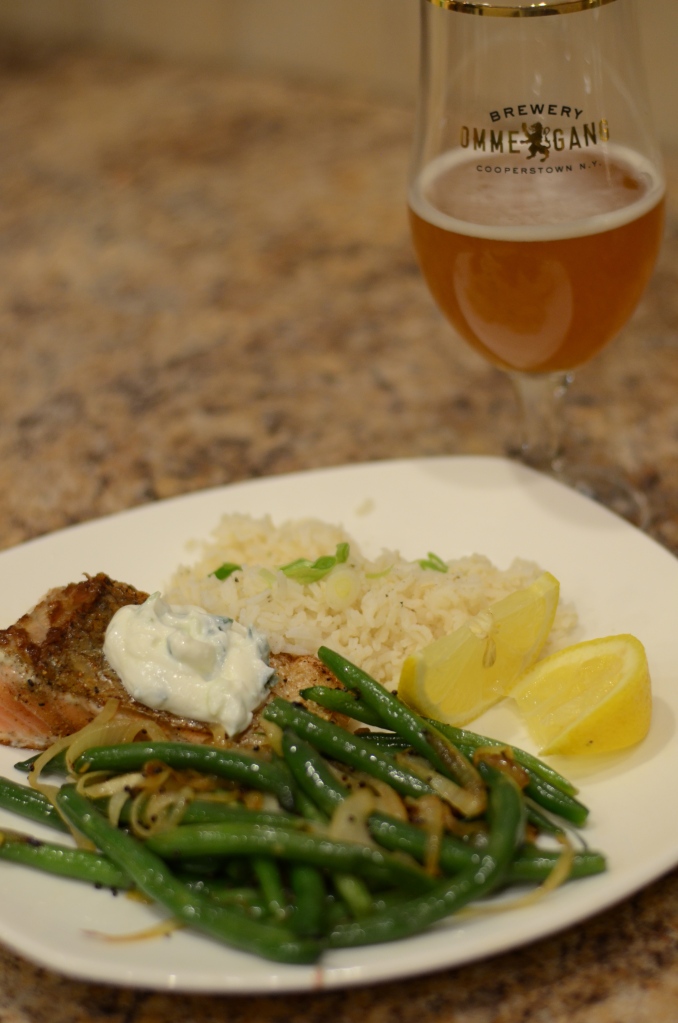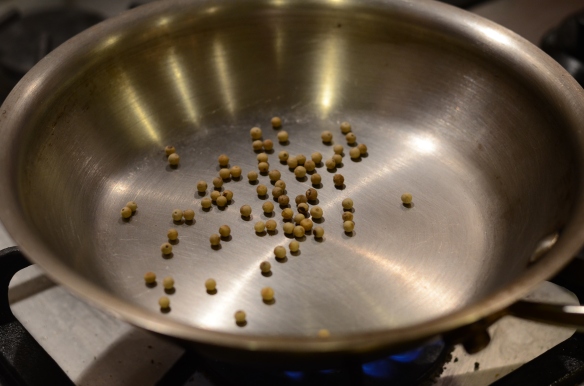
This is one of those “clean out your fridge” recipes, inspired by the fact it was Wednesday, the day before I would pick up a new load of produce from my farm share. I don’t manage my kitchen quite as precisely as a restaurant kitchen manager, but each week, as Wednesday approaches, I am watching to make sure the fullness of the vegetable drawer is getting lower, and that we don’t make anything that generates an abundance of leftovers. I want to be excited by the CSA pickup, not overwhelmed!
I was thrilled to be served, once again, by New York Times Cooking, with an appropriate recipe- Savory Clafoutis With Corn and Swiss Chard. (I sensed some controversy in the comments about using “clafoutis” so I’ll just call it a frittata). It called for my beautiful swiss chard and excess parsley and used the leftovers from canned corn I had for my son’s Raddish Kids box recipe. I even remembered to thaw and incorporate a whole egg I had previously frozen, after it cracked unexpectedly as I was moving things around in the fridge to get ready to go away for a weekend. I was confident to make a number of other substitutions–leftover yellow onion slices plus shallots took the place of leeks, fennel fronds replaced dill, Greek yogurt replaced crème fraîche–and the rest matched what I usually have on hand.


Cooks often turn to eggs to bring together extra vegetables in a recipe, and I found myself doing the same. Quiches, frittatas, omelettes, etc. are all very forgiving. (As Sam Sifton said in the day’s New York Times Cooking newsletter, “You’re a better cook than you think.”) In fact, I wondered if I should make a point to establish weekly menu planning that includes an egg dish. I constantly read and think about how themed weekly meals simplify meal planning. Our family has talked about “Taco Tuesday” and “French Fries Friday.” “Eggy Wednesday?” That won’t do, gotta have alliteration. “Whisking Wednesday” it is.
I set aside extra time this Wednesday to do additional ingredient prep for this veggie burgers recipe-which shared the ingredients of onions, garlic, and parsley–in addition to the swiss chard stems, I took care of thyme and beets while I was chopping away. It felt good to whiz through the dinner-making process the following day. I also enjoyed the leftover frittata as an early lunch snack. Happy cooking!

Corn and Swiss Chard Frittata
Adapted from New York Times Cooking
Ingredients:3/4 Cup whole milk
3/4 Cup plain Greek yogurt
4 large eggs
2 ½ Tablespoons all-purpose flour
2 Tablespoons fresh parsley, chopped
2 Tablespoons dill or fennel fronds, chopped
3/4 teaspoon kosher salt, to taste
1/2 teaspoon freshly ground black pepper, to taste
1 Cup Cheddar (about 4 ounces) cheese, coarsely grated
2 Tablespoons extra-virgin olive oil
~1 Cup of thinly sliced onion or allium— 2-3 shallots, 2-3 small leeks, yellow onion, or a combination
2 Cups corn kernels
1 large garlic clove, grated on a Microplane or minced
1 large bunch Swiss chard, stems removed, leaves coarsely chopped
1/4 Cup Parmigiano-Reggiano, grated
For serving:
Fresh lemon juice
Red pepper flakes
1. Preheat oven to 375 degrees. Start your all your mise en place, slicing the onion first, so you can get the sauteeing underway while you do the rest of the chopping, mincing, grating and measuring.
This approach works if you’re the type of person who can multitask. If you’re not, wait until everything is measured before cranking up the stove!
2. Take a large (at least 9-inches) oven-safe skillet and add olive oil; heat over medium heat. Add onion mixture and sauté until soft and starting to brown slightly (about 10 minutes).

3. While keeping an eye on the onions, take a large bowl and whisk together eggs, milk, Greek yogurt, four, parsley, fennel fronts, 1/2 teaspoon salt and 1/2 teaspoon pepper. Once smooth, incorporate 3/4 Cup of the shredded cheddar.
4. When the onions are cooked, mix in corn, garlic and a pinch of salt; cook until the corn is softened and warmed and the garlic releases its pleasant aroma.
5. Start adding chard leaves, a bunch at a time, and stir them in until wilted. If you’re like me, you will definitely start to get nervous about fitting all of the ingredients in the pan. You will question whether you should have used a pan with higher sides. You’ll survive! (Especially if you opt for the wider plan like I did). Use a lid between adding batches of chard leaves to speed up the wilting.


6. Add 1/4 teaspoon of salt and some black pepper grinds to the pan. Pour your liquid mixture over the corn and chard, then sprinkle over the remaining cheddar and the Parmigiano. Move skillet to oven.

Bake until custard is just set, and slightly brown on top–keep checking, as early as 20 minutes. It took less than 25 minutes for the mixture to set in my wider pan.

Slice and serve with a squeeze of fresh lemon juice and a small pinch of red pepper flakes.






















































































































